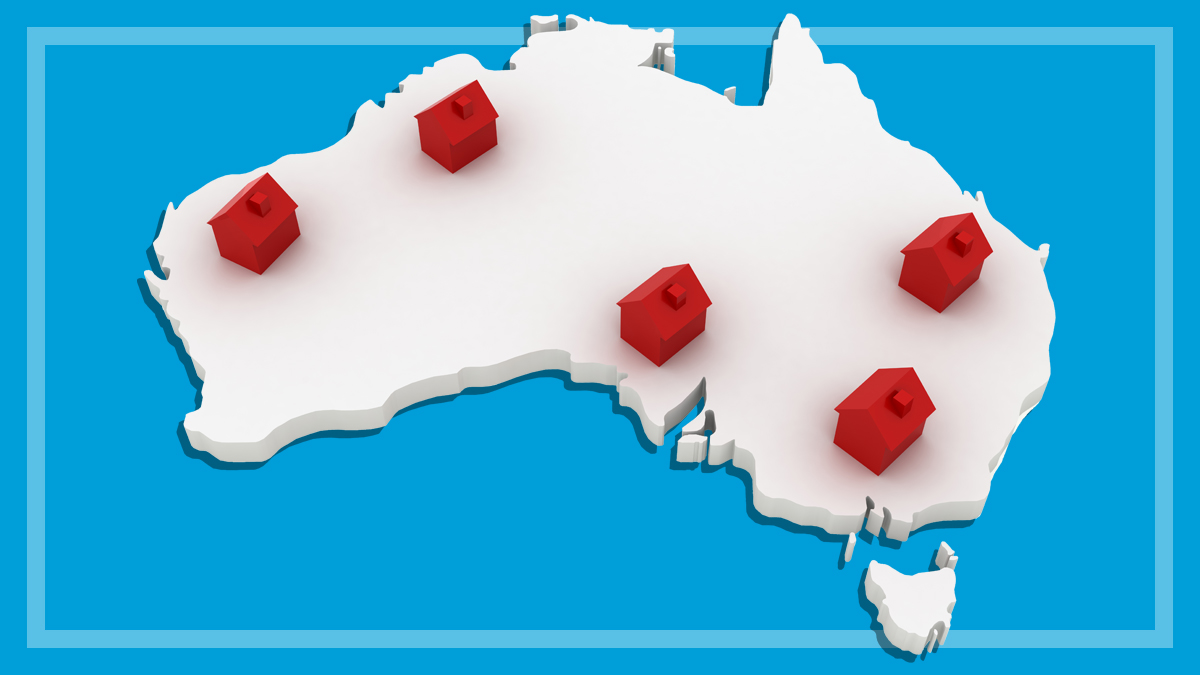Get our independent lab tests, expert reviews and honest advice.
The top five ways to save money on your renters contents insurance

With everything going up except your wages, it may be tempting to cut back on grudge buys. And for most of us, insurance tops the grudge list.
On this page:
- 1. Avoid the loyalty penalty
- 2. Check you've got the right cover
- 3. Increase your excess
- 4. Bargain hunt
- 5. Cancel your contents insurance?
So if your rent is raising the roof, can you cut back on contents insurance? While we don’t advise cancelling your contents insurance completely if you can help it, we’ve put together some simple tips on how you can reduce premiums and save money.
Depending on where you live, you could save well over $1000 a year on your premium.
1. Avoid the loyalty penalty
Your parents probably stuck with the same insurer for years because the insurer gave them a discount to keep their business. And you might also have stuck with the same insurer for years because that’s what your parents did. If this is the case, it’s time to stop.
Insurers rarely, if ever, hand out loyalty discounts these days. They will, however, often charge existing customers more than new customers. You read that right – if you stick with the same insurer, you’ll likely pay more for your insurance, not less. We call that the loyalty penalty. Shout it from the rooftops (just make sure you’re insured) – loyalty discounts are dead.
Our analysis of contents insurance quotes found that a renter with contents insured for just over $50,000 could save up to $300 a year in Victoria, $750 in Queensland ($1030 in Far North Queensland) and $635 in the New South Wales simply by switching insurers.
| ACT | $53,000 | $252 | $390 | $705 |
| NSW | $53,000 | $239 | $439 | $875 |
| NT | $54,000 | $301 | $580 | $662 |
| Qld | $53,000 | $171 | $466 | $921 |
| FN Qld | $53,000 | $241 | $469 | $1270 |
| SA | $54,000 | $143 | $339 | $531 |
| Tas | $55,000 | $195 | $382 | $586 |
| Vic | $53,000 | $214 | $347 | $514 |
| WA | $55,000 | $214 | $468 | $928 |
We’ve left ‘high-end’ insurance policies out of this analysis (more on that below), but there are still big savings to be had. Insurers have their own reasons for these variances. Each insurer could have a different history of claims for your rental home, and they also vary in their willingness to take on potential natural disaster risks that may affect your property, such as flood, cyclone and fire.
The bottom line is, each time your contents insurance comes up for renewal, make sure you get three or four quotes from other insurers to find the cheapest policy.
2. Check you’ve got the right cover
Insurers love to offer extra features because they can make extra money. But that money is coming straight out of your pocket. So if your contents insurance comes with fancy extras like accidental damage or fusion cover, it might be time to trade down to a more basic policy.
Our analysis above left out these ‘high-end’ insurance policies, but if money is tight, there are significant savings to be made from downgrading your insurance cover from ‘premium’ to basic cover. A renter in their 30s with contents insured for just over $50,000 could save up to $1375 a year in Victoria, $1850 in Western Australia, and a whopping $2015 in the Northern Territory by switching to a more basic level of cover.
| ACT | $53,000 | $252 | $410 | $1474 |
| NSW | $53,000 | $239 | $490 | $1866 |
| NT | $54,000 | $301 | $595 | $2317 |
| Qld | $53,000 | $171 | $479 | $921 |
| FN Qld | $53,000 | $241 | $496 | $1270 |
| SA | $54,000 | $143 | $339 | $531 |
| Tas | $55,000 | $195 | $387 | $719 |
| Vic | $53,000 | $214 | $359 | $1590 |
| WA | $55,000 | $214 | $560 | $2063 |
Save on contents insurance
How much could a renter in their 30s with contents insured for $50,000 save on their yearly premium by switching to a basic policy?
In Victoria: $1375.
In Western Australia: $1850.
In the Northern Territory: $2015.
5 ways to save
1. Avoid the loyalty penalty.
2. Check you’ve got the right cover.
3. Increase your excess.
4. Bargain hunt.
5. Cancel your contents insurance?
3. Increase your excess
You can think of the excess as a form of self-insurance. It’s the amount you’d be willing to stump up from your own savings to reinstate your possessions.
You can reduce your premium with an excess as high as $10,000. But that’s a lot to lose in one drop.
The higher your excess, the lower your premium, but the effect on price is smaller as your excess gets higher. For example, if your insurer has a standard excess of $500 and you boost that to $1000, the median drop in the price of your premium is 15%. If you upped it from $500 to $1500, the median drop is 21%. So if you have a $500 premium, this could save $105 a year.
| $500 | $500 | $1000 | 15% |
| $500 | $600 | $1100 | 18% |
| $500 | $700 | $1200 | 17% |
| $500 | $800 | $1300 | 17% |
| $500 | $900 | $1400 | 18% |
| $500 | $1000 | $1500 | 21% |
| $500 | $1500 | $2000 | 19% |
| $500 | $2000 | $2500 | 25% |
| $500 | $2500 | $3000 | 25% |
| $500 | $4500 | $5000 | 32% |
| $500 | $7000 | $7500 | 48% |
| $500 | $9500 | $10,000 | 48% |
4. Bargain hunt
You’ll need to put in the virtual leg work, but insurers do offer discounts. Here are some to look out for.
- Annual payments: Insurers may offer a discount to pay your premium as an annual lump sum instead of monthly.
- Combined policy discount: You can sometimes get a decent discount by combining your home, car and/or third party insurance with one insurer. If you go down this path, make sure you still shop around for all three insurance types each year to get the best policy cover and price for all your insurance.
- Seniors discounts: Loyalty discounts may no longer be a thing, but discounts for seniors are still here (and long may they stay).
- New business discount: Many insurers will offer a discount for new customers, so get quotes from new insurers, but also get one from your current insurer as a new customer. If the ‘new business’ discount your existing insurer offers matches or beats the competitors’ prices, tell your insurer to give you that discount or lose your business.
“I recently received a renewal notice from Australian Seniors insurance for house and contents of about $2100 – an approximate $500 increase on the previous year. As an experiment, I visited their website and plugged in the exact same insurance coverage and received a quote that was about $400 cheaper than the renewal. When I rang to enquire why, they couldn’t tell me but agreed to cancel the renewal and issue a new policy for the lower amount.”
– CHOICE member Craig
5. Cancel your contents insurance?
We don’t advise cancelling your contents insurance if you can help it. Your contents can add up to a lot more than you realise – think laptops, smartphones, gaming stations, televisions, coffee machines, air fryers, sheets, towels, clothes, furniture and bicycles.
And while you can get single-item insurance for portable items like watches, laptops, phones, cameras and bikes, you’ll get much better value cover from contents insurance – as well as cover for all the fixed items in your home.
On top of that, contents insurance policies usually have a neat little added extra that you don’t tend to pay more for (because they all have it anyway) – public liability insurance that travels with you. So if, for example, you cause an accident while riding your bike, and you’re liable to pay compensation, you could be covered by your contents insurance.






